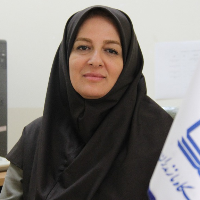Analysis of semantic layers of Tahmasebi Falnama’s painting with an iconology approach
Author(s):
Article Type:
Research/Original Article (دارای رتبه معتبر)
Abstract:
The paintings of Falnama in Safavid period are important in several different aspects. Considering the fact that Falnama is one of the first manuscripts of Qazvin painting school, its paintings has great research value in terms of stylistics. Another important point is related to the intertextual relation of paintings with their multitude texts of their age, which shapes different themes in certain direction. In addition, the art of painting in contrary to its traditional function, in book designing and illustrating literary texts, used for a different function. Therefore, the paintings of Falnama, in terms of semantics, composed of multi-layer structures. What are the implicit and explicit semantic layers in paintings of Safavid’s Falnamas? This is the main issue here. Dispersed Falnama are the most widely reproduced and recognizable of all extant illustrated versions. Of its thirty known folios, one was published as early as 1913, but it remains unclear how any of them arrived in Paris, where they initially came to the attention of collectors. The Belgian dealer George Demote seems to have been responsible for disseminating several, if not most, of the folios among private and public collectors in the first decades of the twentieth century. Except for Four Lions Devour Zaynab, the folios of the dispersed Falnama represent some of the largest known Persian paintings and measure about 59x44.5 cm. By or before 1913, they were removed from their surrounding margins, which would have further increased their size. The varying degree of Surface damage suggests not only the illustrations were frequently used but also perhaps they have been separated for some time. The text-image relationship of the dispersed Falnama, however, demands an ordered sequence, since each illustration is linked conceptually to a facing text, and viewing the pair side by side is critical for understanding the full meaning of the augury. Furthermore, all pictorial Falnamas with related textual auguries appear in codex form, even if the text and images are not Contemporaneous, as is the case of the Ahmed I Falnama and the Dresden volume. Although it is impossible to determine at this time when the folios of the dispersed copy were separated and the reasons for this alteration, circumstantial evidence suggests that they, too, originally were bound, allowing the seeker to view text and image together. The style of the illustrations indicates that the dispersed Falnama probably was created between the mid-1550s and early 1560S, The Scale and treatment of the figures, the more simplified compositions, and the looser, more spontaneous brushstrokes depart from Works created in Tabriz. This paper tried to analyze Falnama’s images (Tahmasbi version, dispersed) with an iconology approach. A discriptive-analytic method used to analyze the images in three steps. The result of this study showed that the existence of religious and Qur'anic themes in the paintings of dispersed Falnama, and their abundance compared to other themes, is intended to make the perception that this book is in accordance with the tradition of Istikhareh, and therefore it is unobstructed in Sharia law. Along with that, other beliefs revived through non-religious themes of images.
Keywords:
Language:
Persian
Published:
Journal of Fine Arts, Volume:24 Issue: 3, 2019
Pages:
51 to 64
magiran.com/p2038944
دانلود و مطالعه متن این مقاله با یکی از روشهای زیر امکان پذیر است:
اشتراک شخصی
با عضویت و پرداخت آنلاین حق اشتراک یکساله به مبلغ 1,390,000ريال میتوانید 70 عنوان مطلب دانلود کنید!
اشتراک سازمانی
به کتابخانه دانشگاه یا محل کار خود پیشنهاد کنید تا اشتراک سازمانی این پایگاه را برای دسترسی نامحدود همه کاربران به متن مطالب تهیه نمایند!
توجه!
- حق عضویت دریافتی صرف حمایت از نشریات عضو و نگهداری، تکمیل و توسعه مگیران میشود.
- پرداخت حق اشتراک و دانلود مقالات اجازه بازنشر آن در سایر رسانههای چاپی و دیجیتال را به کاربر نمیدهد.
دسترسی سراسری کاربران دانشگاه پیام نور!
اعضای هیئت علمی و دانشجویان دانشگاه پیام نور در سراسر کشور، در صورت ثبت نام با ایمیل دانشگاهی، تا پایان فروردین ماه 1403 به مقالات سایت دسترسی خواهند داشت!
In order to view content subscription is required
Personal subscription
Subscribe magiran.com for 70 € euros via PayPal and download 70 articles during a year.
Organization subscription
Please contact us to subscribe your university or library for unlimited access!




